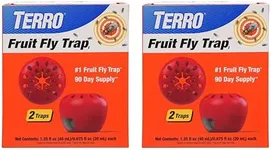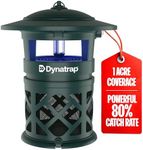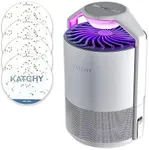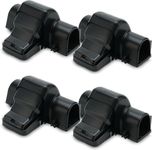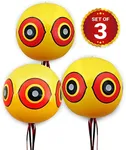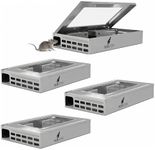Buying Guide for the Best Fly Catchers
Choosing the right fly-catcher can make a significant difference in maintaining a clean and comfortable environment, whether it's for your home, office, or outdoor space. The key to selecting the best fly-catcher lies in understanding the various features and specifications that different models offer. By focusing on these key aspects, you can find a fly-catcher that effectively meets your needs and preferences.Type of Fly-CatcherFly-catchers come in various types, including electric fly zappers, sticky traps, UV light traps, and natural attractants. The type of fly-catcher is important because it determines how the device will attract and eliminate flies. Electric fly zappers use a high-voltage grid to kill flies, making them suitable for outdoor use or larger areas. Sticky traps use adhesive surfaces to catch flies, which are ideal for indoor use and smaller spaces. UV light traps attract flies using ultraviolet light and are effective in both indoor and outdoor settings. Natural attractants use scents or food-based lures to draw flies into a trap. Choose the type based on where you plan to use it and your preference for dealing with the captured flies.
Coverage AreaThe coverage area refers to the amount of space a fly-catcher can effectively protect. This is important because it ensures that the device can handle the size of the area where you need fly control. Coverage areas can range from small rooms to large outdoor spaces. For small indoor areas like kitchens or bedrooms, a fly-catcher with a coverage area of up to 500 square feet may be sufficient. For larger indoor spaces or outdoor areas, look for models that cover 1,000 square feet or more. Assess the size of the area you need to protect and choose a fly-catcher with an appropriate coverage range.
Power SourceFly-catchers can be powered by electricity, batteries, or solar energy. The power source is important because it affects the convenience and placement of the device. Electric fly-catchers need to be plugged into an outlet, making them suitable for areas with easy access to power. Battery-operated models offer more flexibility in placement but require regular battery changes. Solar-powered fly-catchers are eco-friendly and ideal for outdoor use, as they harness energy from the sun. Consider where you plan to use the fly-catcher and choose a power source that fits your needs and lifestyle.
Ease of MaintenanceEase of maintenance refers to how simple it is to clean and maintain the fly-catcher. This is important because regular maintenance ensures the device remains effective and hygienic. Some fly-catchers have removable trays or grids that make cleaning easy, while others may require more effort to disassemble and clean. Sticky traps need to be replaced regularly, while UV light traps may require bulb replacements. Consider how much time and effort you are willing to invest in maintaining the fly-catcher and choose a model that aligns with your preferences.
Safety FeaturesSafety features are important to ensure that the fly-catcher is safe to use around children, pets, and in various environments. Look for models with protective grids to prevent accidental contact with electric components, non-toxic adhesives in sticky traps, and enclosed designs that keep captured flies out of sight. If you have children or pets, prioritize fly-catchers with robust safety features to prevent any accidental harm. Assess the environment where the fly-catcher will be used and choose a model with appropriate safety measures.
